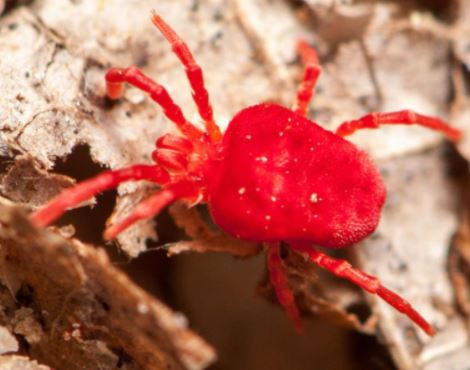There are five species of tick commonly found in Delaware. Identifying which tick has bitten you can help you take steps to protect yourself. There are also a handful of arthropods that are sometimes mistaken for ticks.
Most ticks of medical importance are called “3-host ticks” because they need to find and feed on three hosts to complete their life cycle: once as a larva, once as a nymph, and once as an adult.
In general, larval and nymphal ticks feed on small hosts such as rodents, rabbits, and songbirds. Adult ticks feed on larger hosts such as deer, livestock, and dogs.
Nymphs are most common during the late spring and early summer and larvae during the late summer. For most species, adult ticks are most common in the spring and summer, but blacklegged tick adults are most active in the late fall and winter.
The five most common tick species found in Delaware are the Lone Star Tick, the Deer/Blacklegged Tick, the American Dog Tick, the Gulf Coast Tick and the Asian Longhorned Tick. Different ticks can carry or cause different health issues for humans.
Tick species can be identified by looking closely at their mouthparts and scutum (the shield that forms their back).
They are found in spring, summer, and early fall in a variety of habitats.
They are vectors of the pathogens that cause ehrlichiosis and are also associated with a condition called alpha-gal syndrome (mammalian meat allergy).
They can be recognized by this combination of features:
Adults are often encountered in fall, winter, and early spring. Nymphs are encountered in late spring and early summer, and larvae in late summer.
They are vectors of the pathogens that cause Lyme disease, anaplasmosis, and babesiosis.
They can be recognized by this combination of features:
They are usually encountered in late spring and summer.
They can vector the bacteria that cause spotted fever.
American dog ticks can be identified by this combination of features:
They can transmit bacteria that cause spotted fever.
They can be recognized by this combination of features:
Asian longhorned ticks are found in a variety of habitats in New Castle and Kent Counties during the spring and summer. They infrequently bite humans and are more likely to be seen on pets or livestock.
To date, they are not associated with any medical conditions in the United States.
They can be recognized by this combination of features:
In addition to the 5 commonly seen species listed above, Delaware is home to the following species which rarely bite humans:
These arthropods are sometimes mistaken for ticks, but you can use the following features to tell them apart. Keep in mind that ticks are wingless, have eight legs, and do not have antennae. (Thanks to photographer Matt Bertone for the photos in this section)
 Ticks and mites are both arachnids and share many features such as eight legs and small body size.
Ticks and mites are both arachnids and share many features such as eight legs and small body size.
In fact, technically speaking, ticks are mites, but there are thousands of species of harmless mites that are not ticks.
Most of these other mites are smaller than ticks (usually too small to see without a microscope). The larger ones that are visible to the naked eye, such as this velvet mite, can be distinguished from ticks because they are soft. Ticks are protected by a hard exoskeleton.
Mites belonging to the family Trombiculidae are commonly called “chiggers.” Chiggers in their larval stage can bite humans, causing itching and skin irritation. Nymphal and adult chiggers do not bite humans, feeding instead on plant matter.
Related Topics: dfw, fish and wildlife, Health and Safety, species, tick